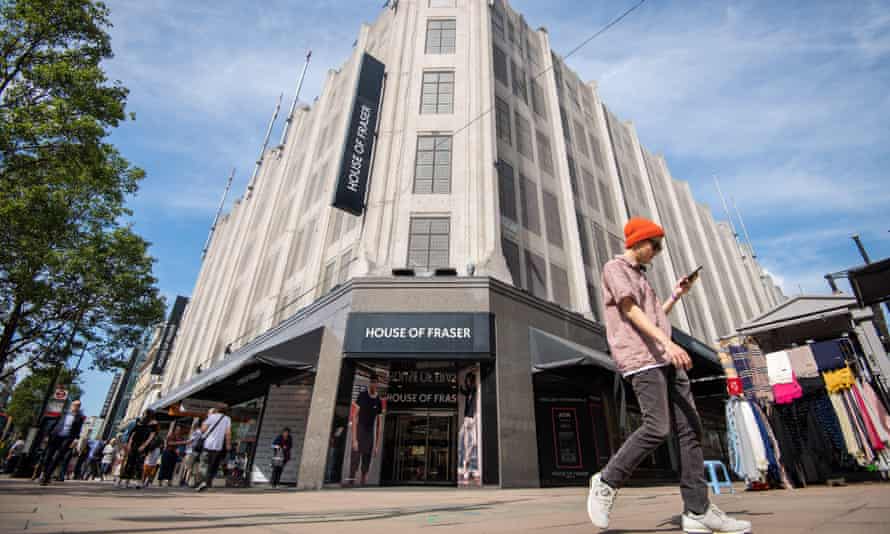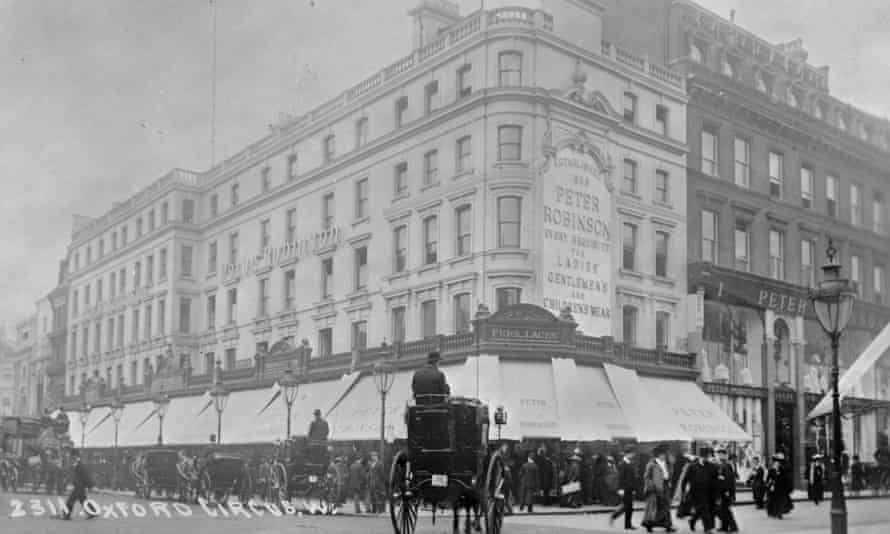The Christmas lights are on along the nation’s busiest high street, but beneath their festive glow about a quarter of the outlets are either empty, or housing temporary shops.
Alongside the shuttered stores and building sites on London’s Oxford Street are now at least a dozen shops selling confectionery, cheap souvenirs or perfume, giving it the air of a rundown seaside resort rather than a global retail destination.
Big names including Topshop, Debenhams, Gap, French Connection and Carphone Warehouse have disappeared, while others, such as Next and Monsoon have reduced their space. And little wonder: in the second year of the pandemic, sales in the Oxford Street area, including Regent Street and Bond Street, dropped by £8bn to £2bn last year and are expected to reach just £5bn this year, according to trade body the New West End Company (NWEC).
The vast former House of Fraser department store will close next month before it is redeveloped into offices and a rooftop restaurant above a smaller shop and a basement gym with a pool. Both Marks & Spencer and John Lewis are considering converting some of their retail space into offices and leisure facilities.
Drapers, bonnet makers and saddlers began to take over from pubs and theatres on Oxford Street at the end of the 18th century, and these changes mark a historic retreat from retail’s national stronghold.

“I do think we have hit the bottom,” says Jace Tyrrell, the chief executive of NWEC.
The 1.2-mile long shopping street is in the throes of major change, with Covid accelerating the switch to buying online and in more local shops. This has driven away commuters, day trippers and international tourists.
But Oxford Street is still devoted almost exclusively to retail. It has just one pub, and very few dining outlets facing the thoroughfare. (There are, however, restaurants and cafes in department stores such as Selfridges and John Lewis.)
Redevelopments promise more entertainment and dining alongside office space and leisure facilities such as gyms and crazy golf. There may also be more flats, which is not new: in Victorian times it was common for shop staff to be housed above the store.
Mark Robinson, chair of the government’s High Streets Task Force, says Oxford Street’s future must be about reacting to consumer and stakeholder demands: “Its location and heritage give it an enormous start.”
The street has reinvented itself before: in the early 18th century the Roman road out of London had become a muddy track by the time it reached the gallows at Tyburn, now known as Marble Arch.
A building boom in the 1700s saw terraced houses replace the street’s animal pounds and seedy pubs. The houses were soon converted into retail spaces, with workrooms above, for drapers, bootmakers and milliners. In the early 1800s there was a trend for “bazaars” – indoor markets that often included entertainment as well as stalls. In the 1870s, as outlined in Andrew Saint’s Survey of London, department stores emerged.
Marshall & Snelgrove, on the site of the now-empty Debenhams, was among the first, but of the Victorian retail giants only John Lewis remains. Well-known names including Peter Robinson, Bourne & Hollingsworth and furniture maker Waring & Gillow are long gone.
Before retail took over, Oxford Street was an entertainment hotspot, home to several theatres, starting with the Pantheon in 1772. That gave its name and site to the Marks & Spencer store east of Oxford Circus.
There have been churches on the street, as well as hospitals and several pubs – only one of which, the Flying Horse near Tottenham Court Road, survives. Lyons, the tearooms operator, once had three “corner houses” on Oxford Street, and training rooms in the building that is now Marks & Spencer Marble Arch.
Tyrrell says Oxford Street must look to its history to build a more “European approach”, with food and drink services, entertainment, seating and greenery serving offices above.
“We still think that by 2024 we will be back to £10bn of sales – even given what has happened in the world – but this will be from a very different mix and different customer. There will be more people working, a longer dwell time and more domestic shoppers coming to London.”
Rents in the street have fallen by up to 50%, according to Tyrrell, and that could foster new ideas.
Paul Swinney at the Centre for Cities thinktank agrees: “In the past the risk of trading [for a new business] in the centre of London was too expensive. If that comes down, it opens a new business opportunity for experiment and innovation.”
For that to succeed, though, work must be done on making Oxford Street a more attractive place to dally. Westminster council has pledged to £150m of public realm improvements, including more greenery and seating, but it ditched plans for temporary piazzas on either side of Oxford Circus this year after an early attempt to lure back the crowds backfired.

The widely mocked £6m Marble Arch Mound, an artificial hill intended as an attraction linking Oxford Street to Hyde Park, had to switch to free entry after only two days, and is set to close next month.
Westminster council now plans wide consultation before confirming its plans to improve the look and feel of the street. But finding a happy solution could be tough.
Traffic has been reduced and the pavements widened in recent years, but it’s hard to engender a leisured atmosphere amid a constant stream of buses and taxis, with no space for slower transport such as bicycles.
The traffic problems seem endemic: witnesses to a royal commission more than a century ago, in 1903, complained that there were too many buses on Oxford Street. Proposals for improvement have varied from a 1960s plan for a deck above the street to carry shoppers via a travelator and a 1970s scheme for a track carrying cars on air cushions, to numerous calls for full pedestrianisation.
Today the street is banking on Crossrail, or the Elizabeth Line, which will ferry in shoppers from further afield if it opens this spring, at least four years later than once hoped.
Plans for improvement have “got to get moving fast”, according to Tyrrell. “The next couple of years we have got a window,” he says. “Not just retail but all brands will be looking at the street. When we get into the spring and summer, and customers and office workers are back, that’s when trends and perceptions are going to be set. We have to make sure we are ready to take that opportunity.”
Andrew Saint’s The Survey of London, Vol 53: Oxford Street, is published by Yale University Press
Stay connected with us on social media platform for instant update click here to join our Twitter, & Facebook
We are now on Telegram. Click here to join our channel (@TechiUpdate) and stay updated with the latest Technology headlines.
For all the latest Business News Click Here
